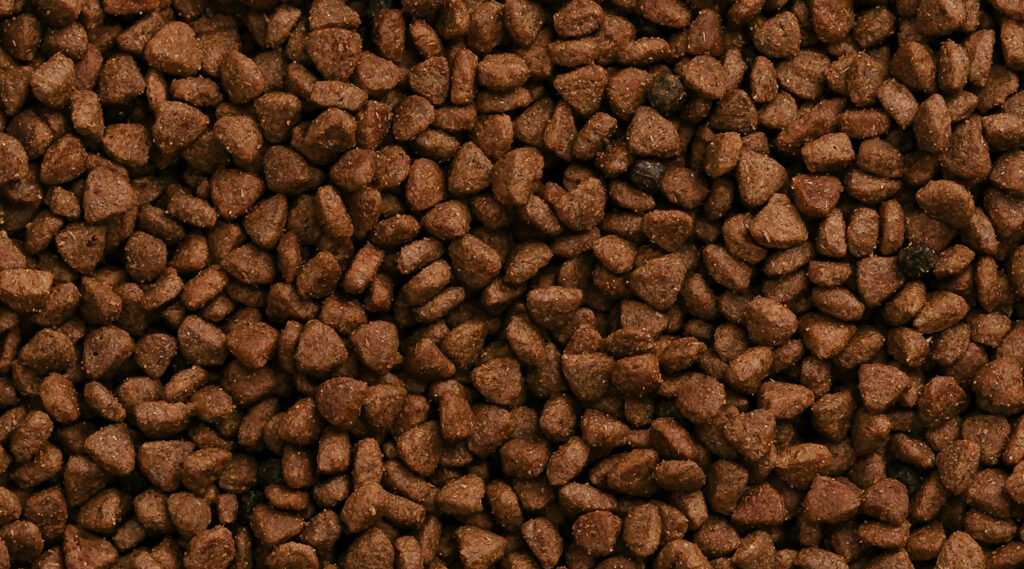Why learning to read pet food labels matters
Walk into a pet store, and you’ll see hundreds of bags and cans claiming to be “natural,” “gourmet,” “premium,” or “holistic.”
But what do these words really mean?
Knowing how to read the actual label — beyond the marketing claims — helps you:
- Choose food that matches your pet’s life stage and health
- Avoid common allergens or fillers
- Compare products fairly on protein, fat, and calorie content
- Feel confident you’re buying quality, not just clever branding
(⚠Disclaimer: This article is general educational content. Always check with your veterinarian about your pet’s specific needs.)
The 7 key parts of a pet food label (and what each really means)
Every commercial pet food sold in the U.S. (and most countries) must include:
- Brand & product name
- Net weight
- Ingredient list
- Guaranteed analysis – AAFCO: Nutritional Labeling
- Nutritional adequacy statement – AAFCO: Reading Labels
- Feeding guidelines
- Manufacturer or distributor info
1. Brand & product name: wording tells you a lot
AAFCO labeling rules mean the name itself hints at actual content:
| Label wording | What it must mean |
|---|---|
| “Beef Dog Food” | ≥70% beef and ≥95% beef excluding water |
| “Fluffy’s Chicken Dinner”, “Beef Entrée for Dogs”, or any label with “dinner,” “entrée,” “platter” etc. | ≥10% beef or chicken and ≥25% beef or chicken excluding water |
| “Dog Food with Chicken” | ≥3% chicken |
| “Chicken Flavor Dog Food” | Detectable flavor; possibly tiny chicken content |
So if the label says “with beef,” there might be very little beef. If it says “Beef Dog Food,” beef must make up the bulk.
2. Guaranteed analysis: what numbers to watch
Lists minimum percentages for protein & fat; maximum for fiber & moisture.
Example:
- Crude protein: min 26%
- Crude fat: min 15%
- Crude fiber: max 4%
- Moisture: max 10%
Why it matters:
- More protein doesn’t always mean better — source & digestibility count.
- For wet vs dry foods, numbers look misleading because of water content.
- Use dry matter basis calculation to compare fairly:
Dry matter % = (Guaranteed % ÷ (100 - moisture %)) × 100Example: 26% protein, 10% moisture →
26 ÷ (100 – 10) × 100 = ~28.9% protein on dry matter basis.
3. Ingredient list: first five matter most
Listed by weight before cooking.
Tips:
- Whole meat (e.g., “chicken”) vs. “chicken meal”: meal is dehydrated, so more protein-dense.
- Prefer named sources: “chicken by-product meal” is clearer than “meat by-product meal.”
- Avoid “animal digest,” “meat meal” (unspecified source).
Watch for:
- Corn, wheat, soy → not harmful by default, but can be fillers (although debatable nowadays) if first ingredients.
- Splitting: listing “peas,” “pea protein,” “pea fiber” separately to move meat up.
4. Nutritional adequacy statement: the “complete & balanced” test
The nutritional adequacy statement is perhaps the most important part of a label. It is the key to matching a pet’s nutritional needs with a product.
Look for:
✅ “<product name> is formulated to meet the nutritional levels established by the AAFCO Dog (or cat) Food Nutrient Profiles for <life stage>.”
or
✅ “Animal feeding tests using AAFCO procedures substantiate that <product name> provides complete and balanced nutrition for <life stage>”
And check life stage:
- “For growth” → puppies/kittens
- “For maintenance” → adults
- “For all life stages” → meets higher growth needs; okay for adults too
If it says “for intermittent or supplemental feeding only,” it’s not a full diet.
5. Feeding guidelines & life stage relevance
Label gives daily amount by pet weight — but:
- Based on average pet activity
- Spayed/neutered or senior pets often need ~10–20% fewer calories
- Highly active or working dogs may need much more
Use as a starting point; adjust by tracking your pet’s weight & body condition.
6. Marketing claims: what they often mean (or don’t)
| Claim | Typical meaning |
|---|---|
| Natural | No synthetic colors/preservatives; vitamins & minerals can be synthetic |
| Organic | USDA certified; costly, stricter |
| Grain-free | Uses legumes, potatoes; good for some allergies |
| Holistic, premium, gourmet | Purely marketing — no standard definition |
| Human grade | Can only be used legally if all ingredients & production meet human food standards audited based on AAFCO Human Grade Standards for Pet Products standard |
7. Special diet examples & when to ask your vet
- Limited ingredient diets: fewer proteins & carbs → help pinpoint allergies.
- Novel protein diets: e.g., duck, venison, rabbit → less likely to trigger known allergies.
- Senior formulas: often lower calories, adjusted minerals.
- Large breed puppy food: helps control calcium/phosphorus for healthy bone growth.
Always confirm with your vet, especially for pets with:
- Kidney disease
- Diabetes
- Food allergies
- Pancreatitis
FAQ
Q: Should I rotate proteins or brands?
Yes — can help reduce food boredom & lower risk of developing intolerances. Transition gradually over 7–10 days.
Q: Are raw diets better?
Controversial. Some benefits, but higher risk of bacterial contamination & imbalanced nutrition. Talk to your vet.
Q: Is homemade food better?
Only if properly balanced with vet or pet nutritionist guidance. Random recipes often miss essential nutrients.
Real‑world comparison: Label A vs Label B
| Label A | Label B | |
|---|---|---|
| First ingredient | Chicken | Corn |
| Protein (dry matter) | 30% | 23% |
| Fat (dry matter) | 14% | 10% |
| “Complete & balanced” | Yes, adult dogs | Yes, all life stages |
| Price per day (30lb dog) | $1.80 | $1.10 |
Label A: Pros & Cons
✅ Pros:
- First ingredient is an animal protein (chicken) — good sign of quality
- Higher protein (30% on dry matter) → better muscle maintenance, energy
- Higher fat (14%) → tastier, supports healthy skin & coat
- Still “complete & balanced” → meets nutritional standards
❌ Cons:
- Higher fat → could be too rich for sedentary, senior, or overweight dogs
- Higher price per day ($1.80 vs $1.10)
Label B: Pros & Cons
✅ Pros:
- Lower cost per day — better for tight budgets or multiple pets
- Labeled “all life stages” → technically safe for puppies and adults
❌ Cons:
- First ingredient is corn → more carbohydrate, less digestible protein
- Lower protein (23%) → may not be ideal for active dogs
- Lower fat (10%) → might be less palatable; can lead to dull coat in some dogs
- “All life stages” formulas must meet higher puppy nutrient levels → may be too calorie-dense for adult/senior dogs, risking weight gain
✅ General conclusion of the comparison:
- Label A is generally the better choice for most adult, active dogs — higher quality protein source, better protein & fat levels, more natural ingredient order.
- Label B could work for healthy dogs if budget is the top concern, but:
- May offer less muscle-supporting protein
- Uses grain as primary ingredient (more filler)
- Potentially higher calorie density for adults if labeled “all life stages”
So, Label A better fits nutrition-first buyers; Label B fits budget-first buyers — but with trade-offs.
Always look past price per bag → compare price per feeding and what’s actually in the first five ingredients.
Myth busters
❌ By-products are always bad
Named by-products like chicken liver = nutrient-rich; anonymous ones = avoid.
❌ Grain-free = always healthier
Only needed for allergies; otherwise, not proven better.
❌ Higher protein always better
Not for pets with kidney disease or certain conditions.
❌ All “meals” are low quality
Chicken meal can be high-quality concentrated protein.
How to pick food that fits your pet & budget
- Look past branding → check first five ingredients
- Confirm “complete & balanced” for your pet’s life stage
- Compare dry matter basis for protein & fat
- Adjust amount by your pet’s age, weight, activity
- Track stool, coat, energy — real signs of diet success
- Don’t forget dental chews, fresh water, and treats (<10% daily calories)
✅ Conclusion
Pet food labels look complicated, but you don’t need to be a scientist to decode them.
Focus on: named proteins, guaranteed analysis, complete & balanced statement, and life stage match.
And when in doubt? Ask your vet — they know your pet’s unique needs best.
⚠️ Disclaimer
For educational purposes only — it’s recommended to consult your veterinarian before changing your pet’s diet significantly.

